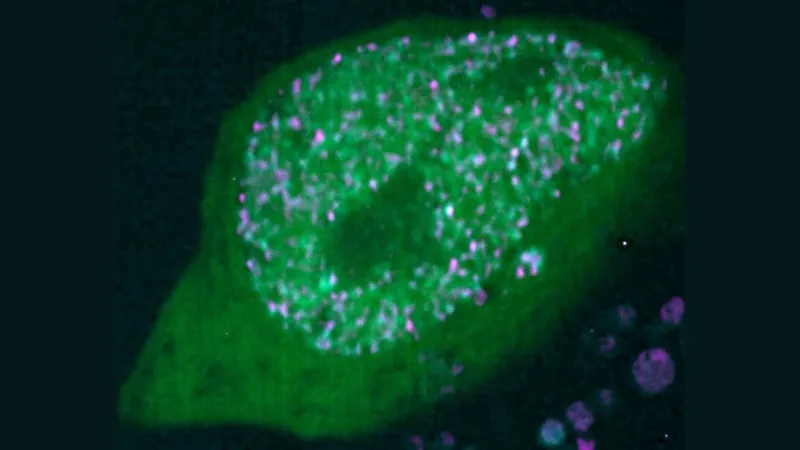
Revolutionary Discovery: How Olfactory Neurons Master Gene Selection with 'Solid' Clusters!
2025-05-30
Author: Nur
Unveiling the Mystery of Smell: A Marvel in Gene Expression
A groundbreaking study published in *Nature* has revealed the astonishing method by which olfactory sensory neurons (OSNs) achieve pinpoint precision when selecting genes to express. This breakthrough addresses a long-standing question in biology: how do these neurons choose just one olfactory receptor (OR) gene from thousands of possibilities?
The Puzzle of Gene Selection
Led by Prof. Stavros Lomvardas from Columbia University, the research sheds light on the intricate mechanism behind "singular OR choice," crucial for our sense of smell. Each OSN must specialize in detecting specific odor molecules, and this precise selection ensures that we accurately perceive a myriad of scents.
From Liquid to Solid: A Surprising Twist!
What makes this discovery even more remarkable is the role of unexpected solid-like molecular clusters that persist for days. Rather than adhering to the usual model of transient liquid-like condensates, these solid aggregates maintain their structure and stability, challenging conventional understanding of how proteins interact within cells.
The Genome Folding Dilemma
This study dives into what scientists refer to as the "genome folding paradox." In cells, DNA consists of genes and regulatory elements called enhancers, which typically activate gene expression. However, these enhancers can establish selective connections with genes located far away, a phenomenon uncommon in the expected norms of molecular behavior. Prof. Lomvardas previously identified multi-chromosomal enhancer hubs where these connections happen, but the solid nature of this process was previously unknown.
Unlocking the Secret: Composite Motifs at Play
The team focused on two transcription factors (LHX2, EBF1) and an adapter protein (LDB1) essential for OR gene expression. Contrary to their initial hypothesis of liquid behavior, what emerged were solid aggregates that defied expectations. These stable nucleoprotein condensates maintained their integrity, not merging or allowing molecular exchange during experiments.
The Game-Changing Role of DNA Sequences
To decipher how these solid phase transitions occurred, researchers found that specific DNA sequences, or "composite motifs," triggered the formation of solid clusters. These motifs feature a distinct pattern, with LHX2 and EBF1 binding sites exactly one base pair apart, which facilitates unique protein interactions that enhance stability.
A Broader Implication: Beyond Olfactory Neurons
This significant finding suggests that mechanisms like these could extend to other cell types requiring stable gene expression, particularly in post-mitotic neurons. Prof. Lomvardas indicates that the genomic interactions occurring over vast genomic distances are not exclusive to olfactory sensory neurons.
What's Next? A Journey into Genome Organization!
Looking ahead, the research team aims to delve deeper into the structural foundation of these solid phase transitions and explore other biological systems that might benefit from similar genomic strategies.
Stay tuned as science uncovers more secrets of how our bodies operate at the molecular level, and how these findings could shape our understanding of genetic expression across various systems!



 Brasil (PT)
Brasil (PT)
 Canada (EN)
Canada (EN)
 Chile (ES)
Chile (ES)
 Česko (CS)
Česko (CS)
 대한민국 (KO)
대한민국 (KO)
 España (ES)
España (ES)
 France (FR)
France (FR)
 Hong Kong (EN)
Hong Kong (EN)
 Italia (IT)
Italia (IT)
 日本 (JA)
日本 (JA)
 Magyarország (HU)
Magyarország (HU)
 Norge (NO)
Norge (NO)
 Polska (PL)
Polska (PL)
 Schweiz (DE)
Schweiz (DE)
 Singapore (EN)
Singapore (EN)
 Sverige (SV)
Sverige (SV)
 Suomi (FI)
Suomi (FI)
 Türkiye (TR)
Türkiye (TR)
 الإمارات العربية المتحدة (AR)
الإمارات العربية المتحدة (AR)